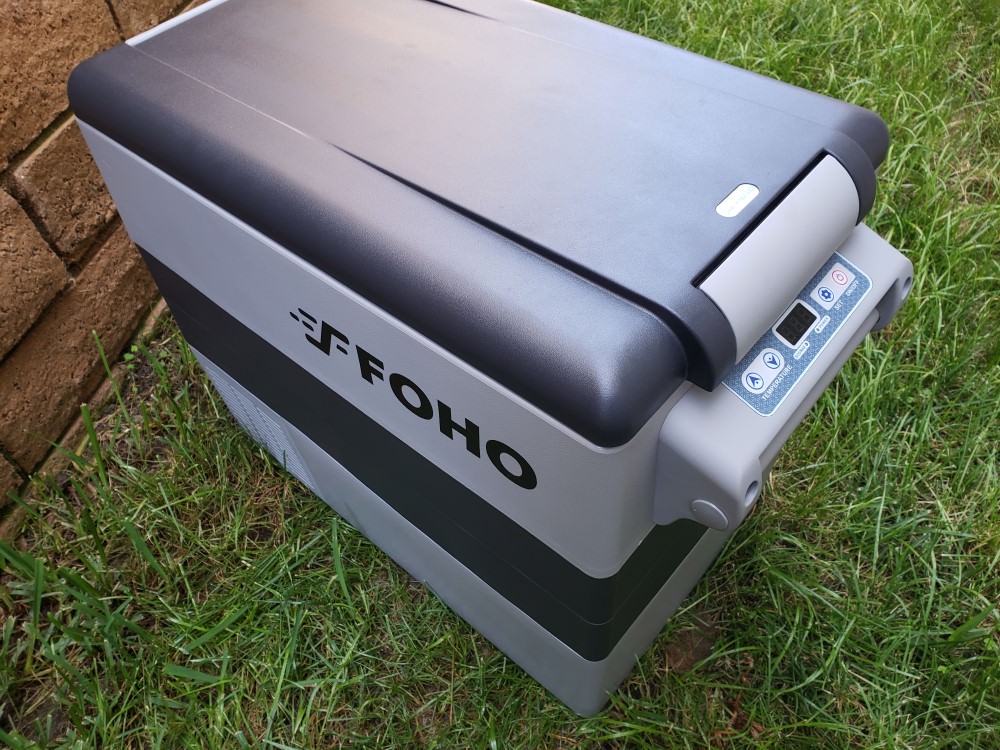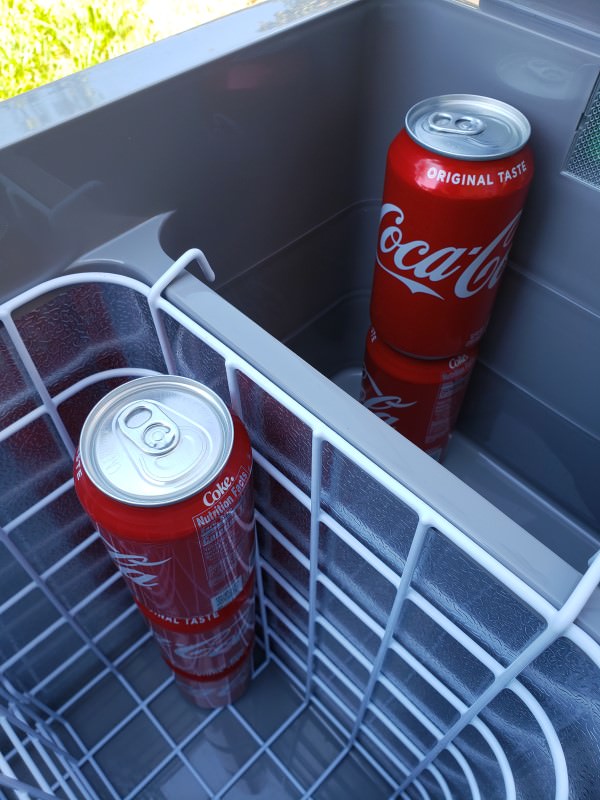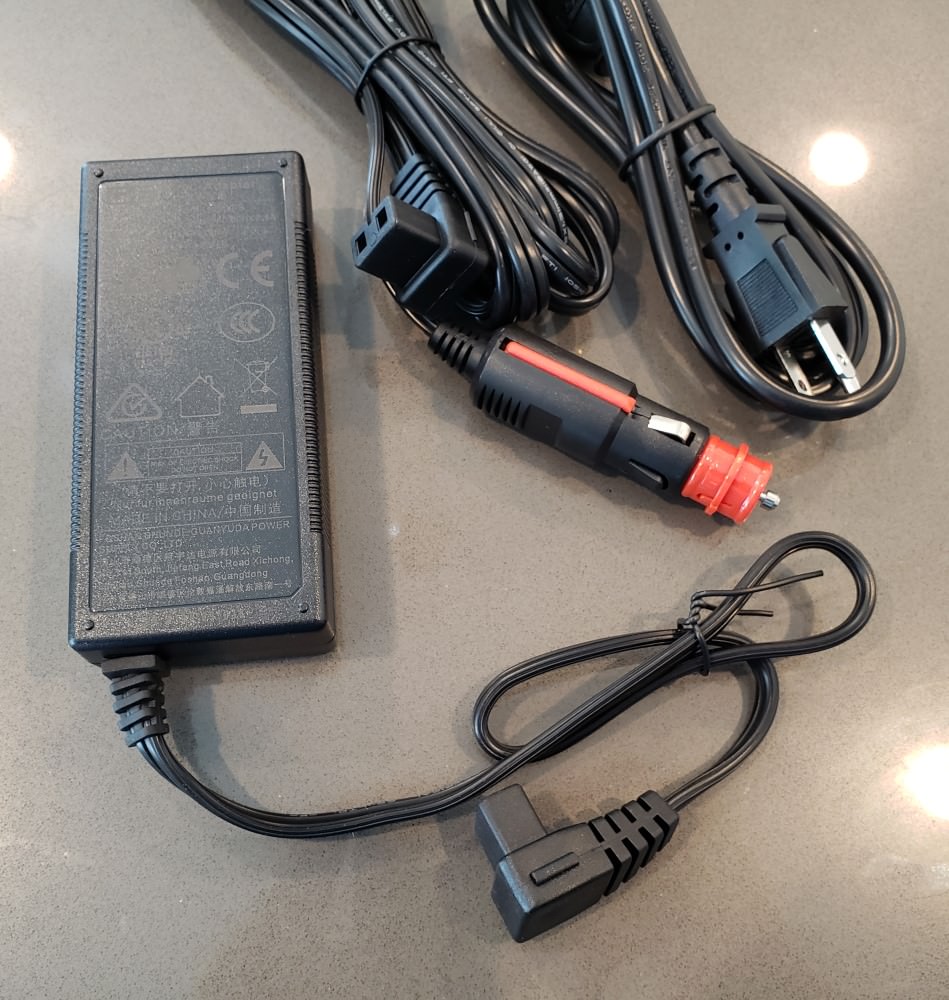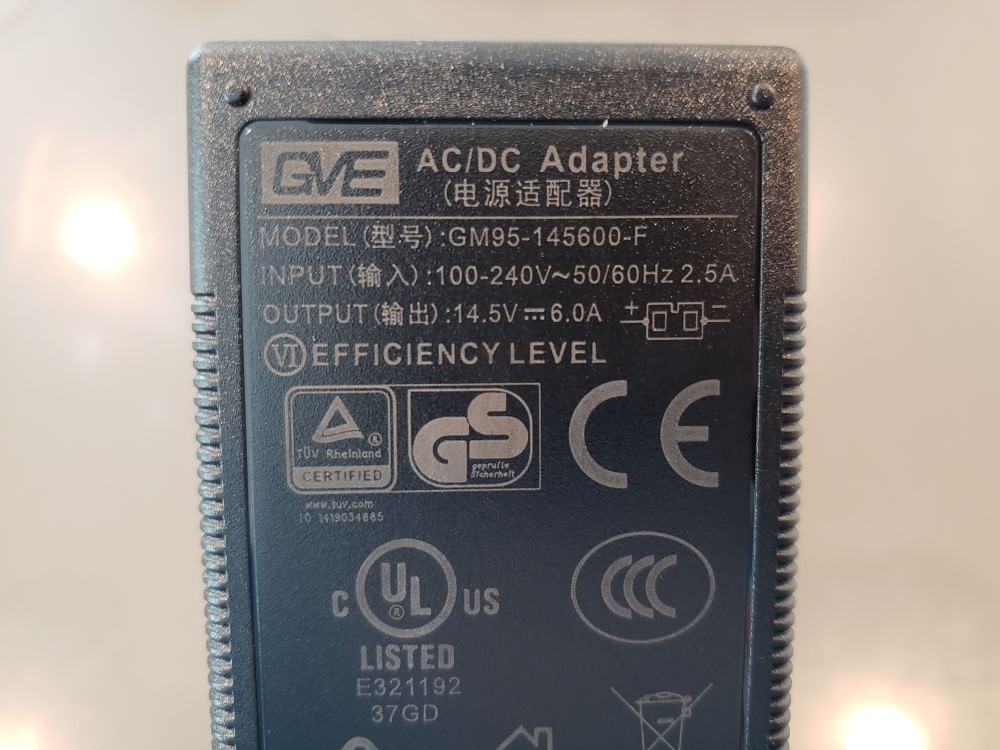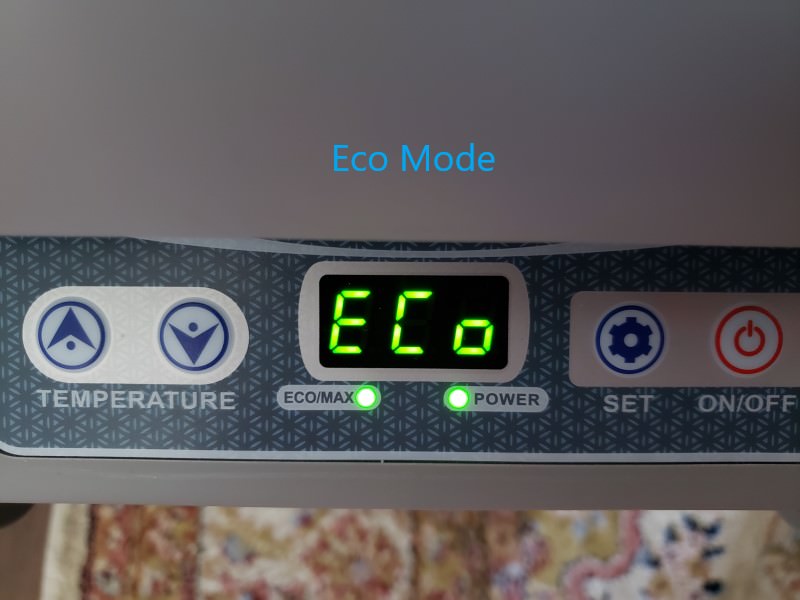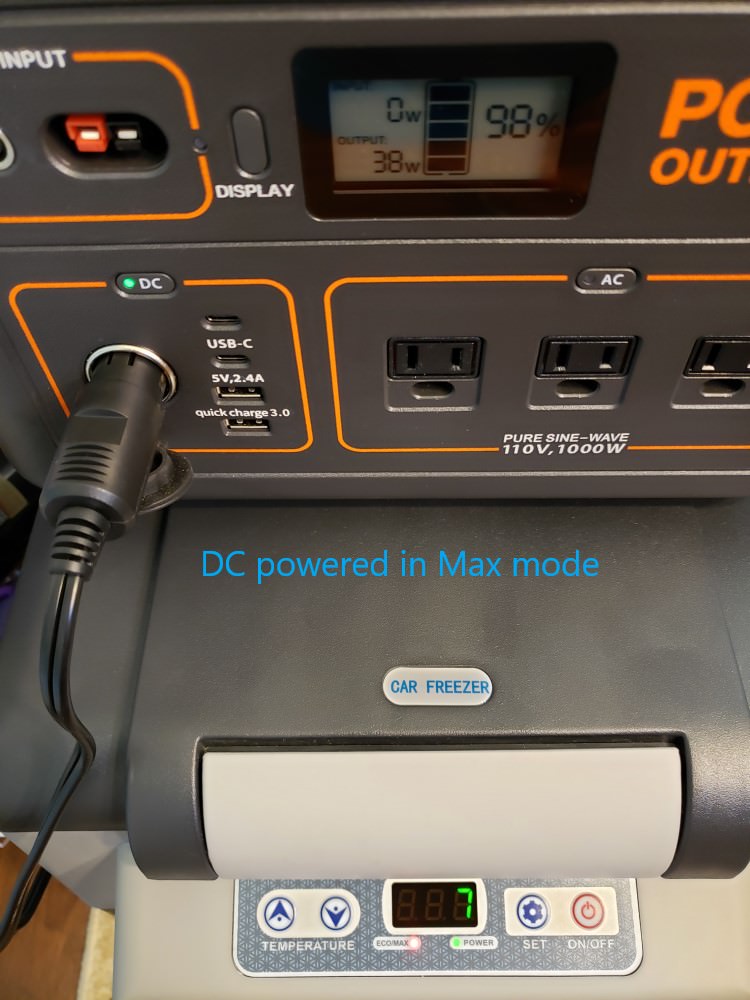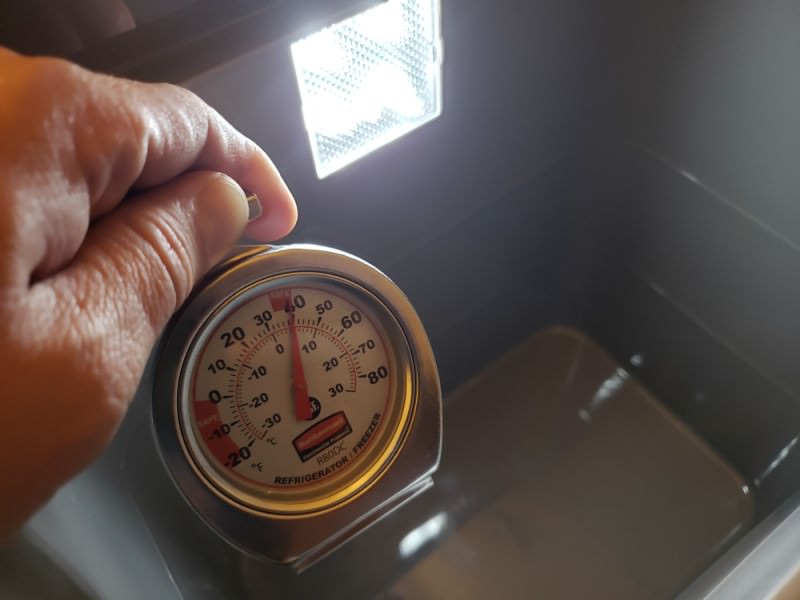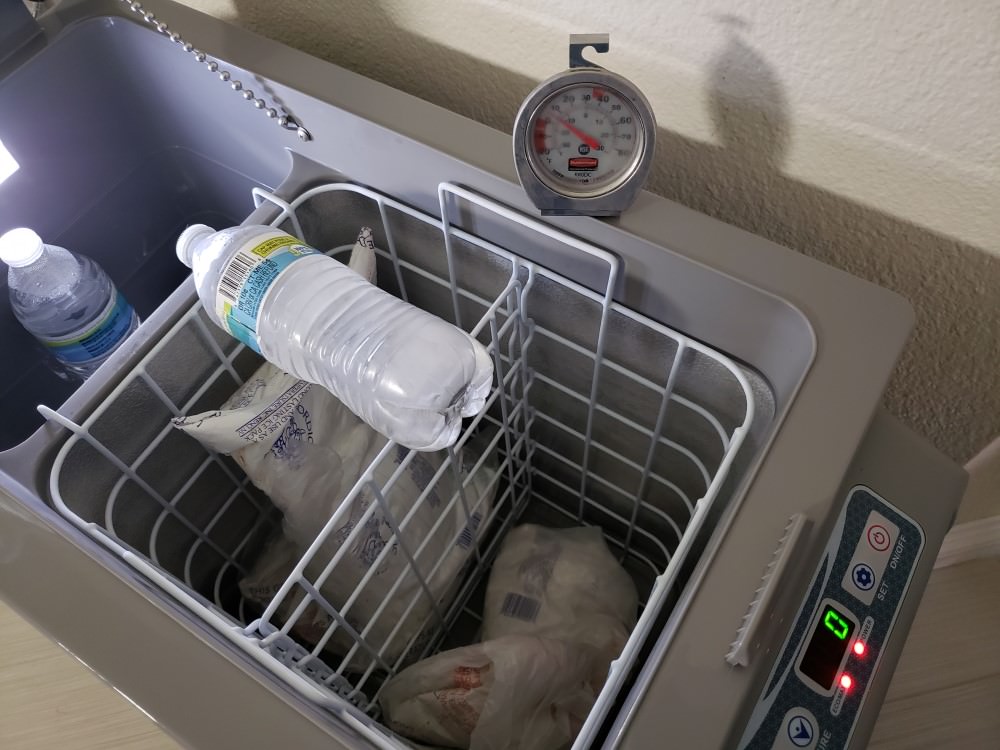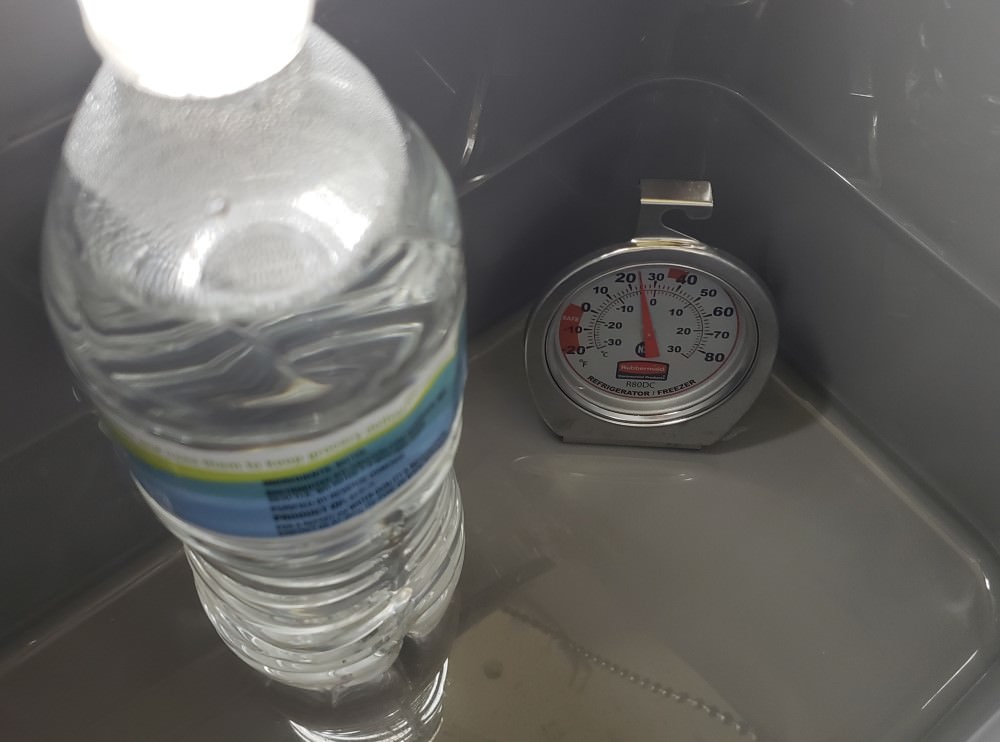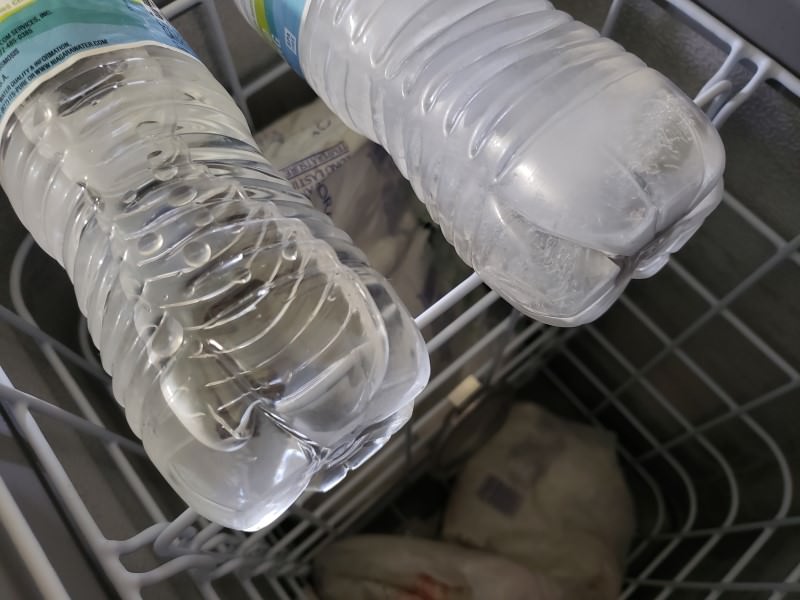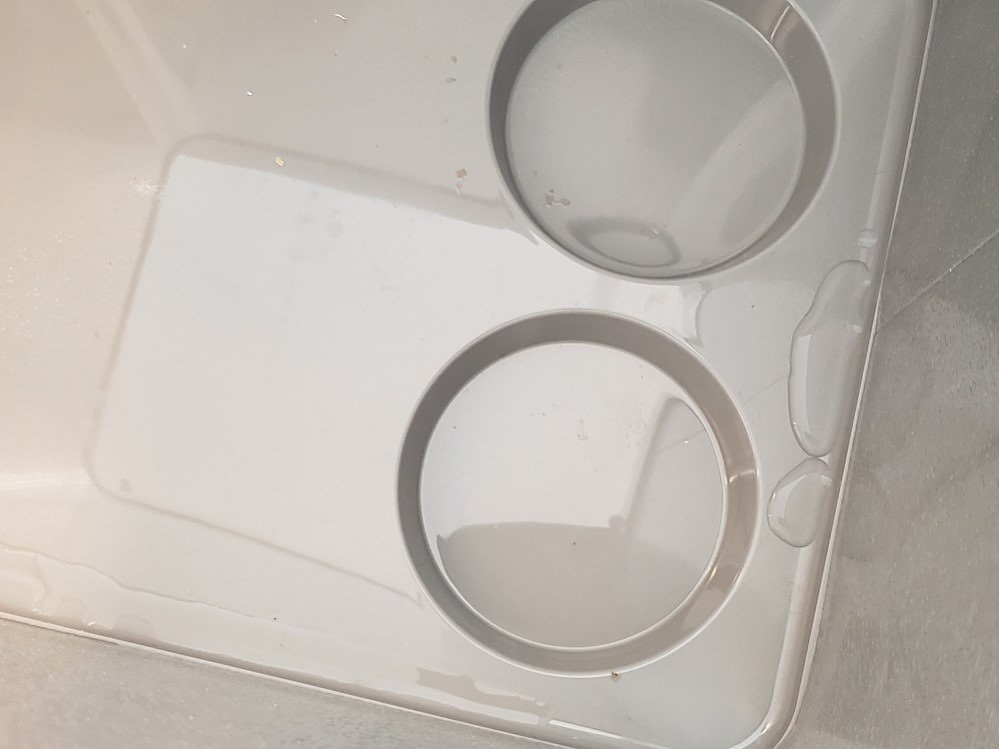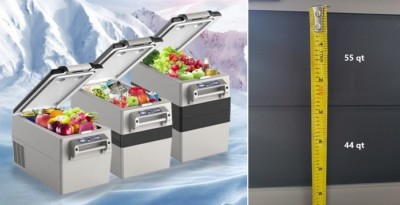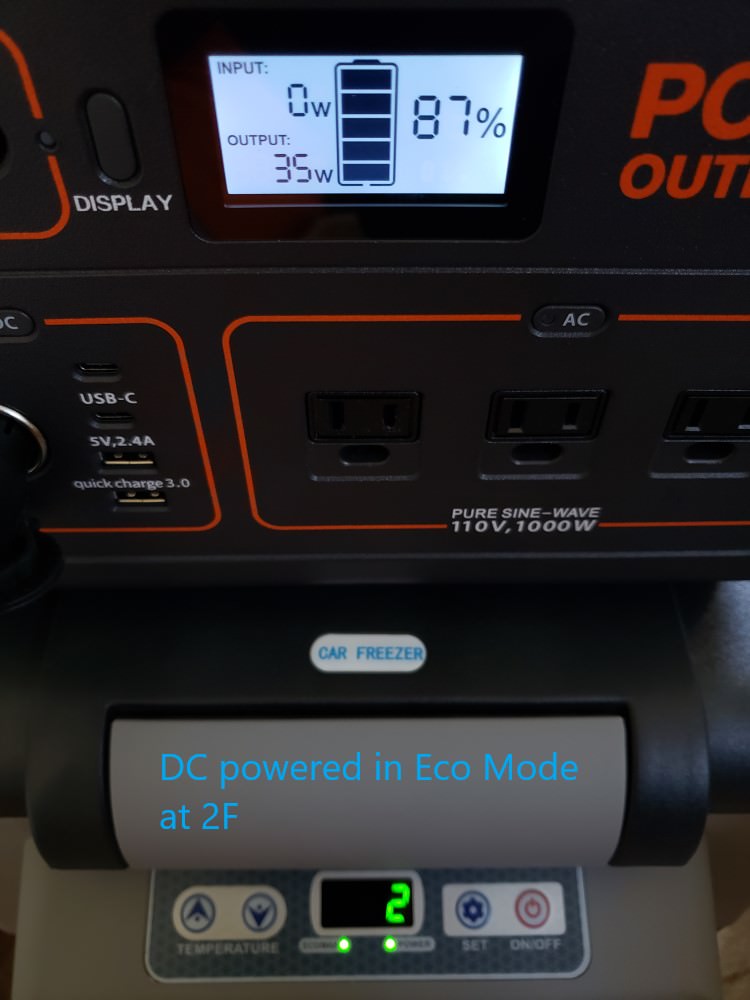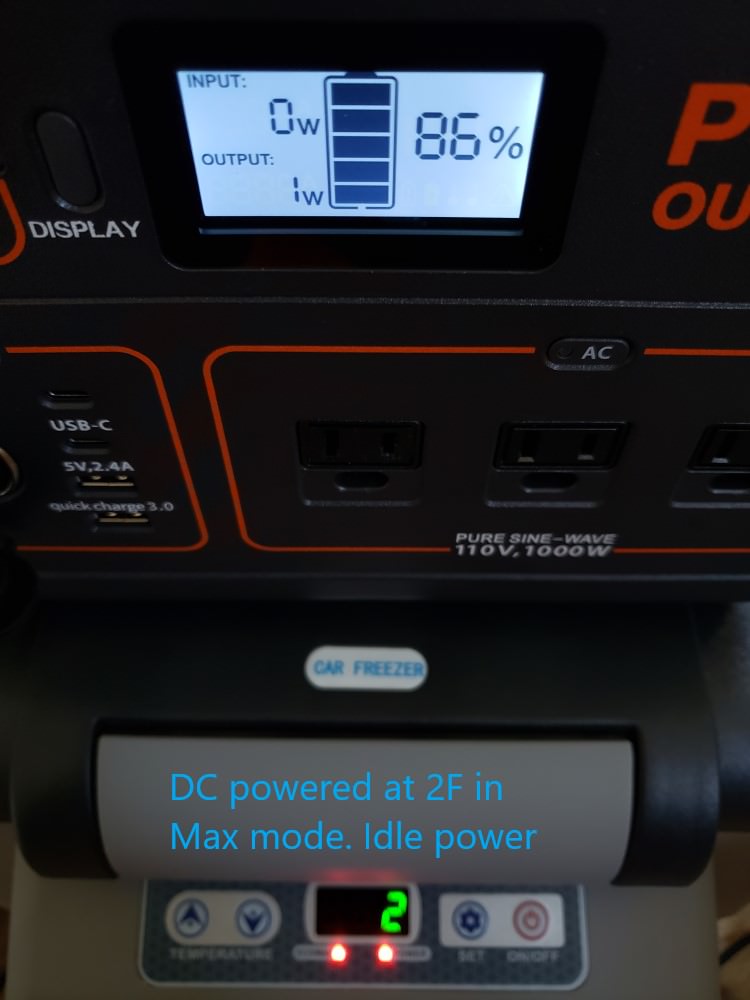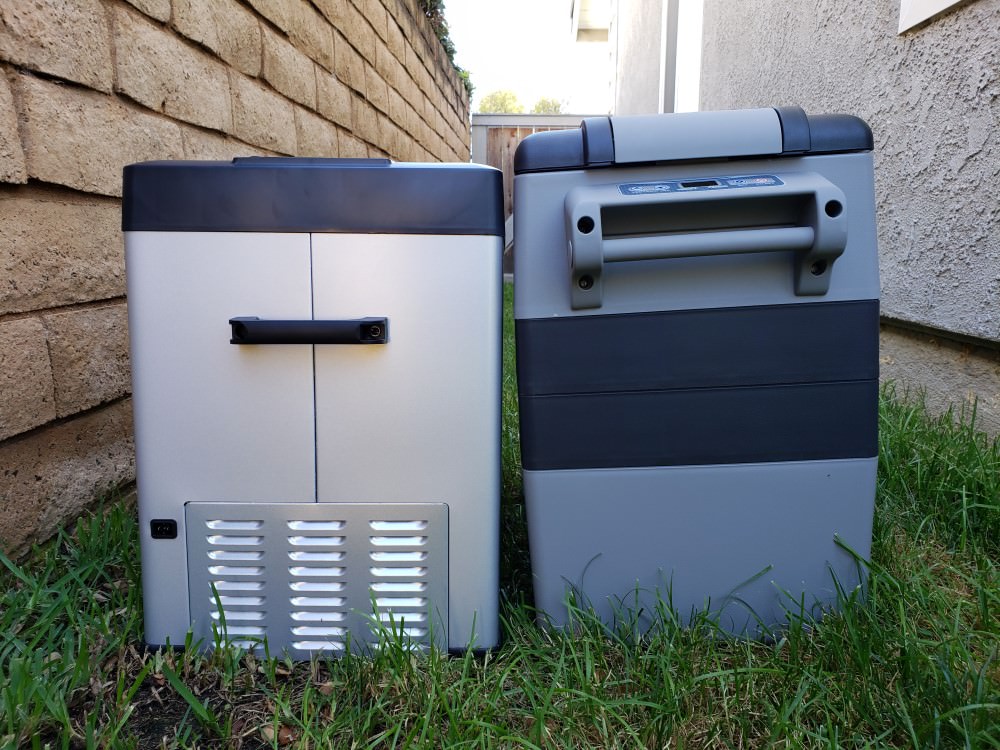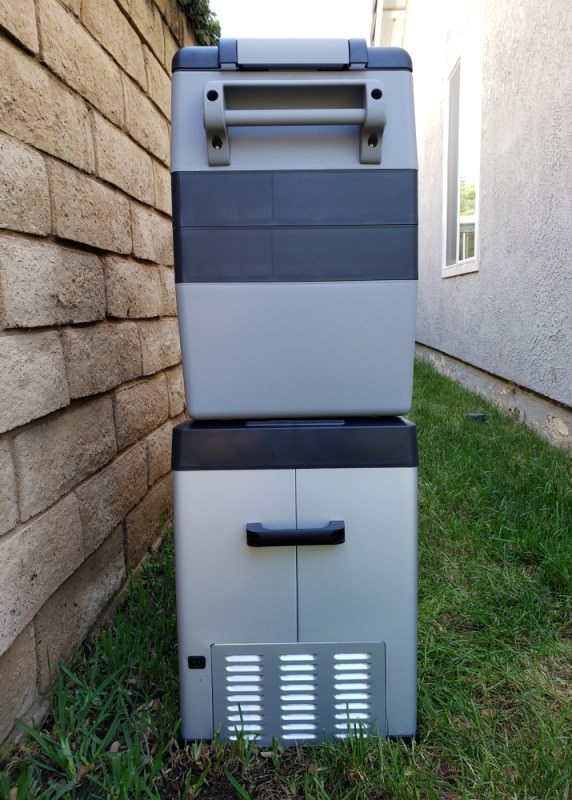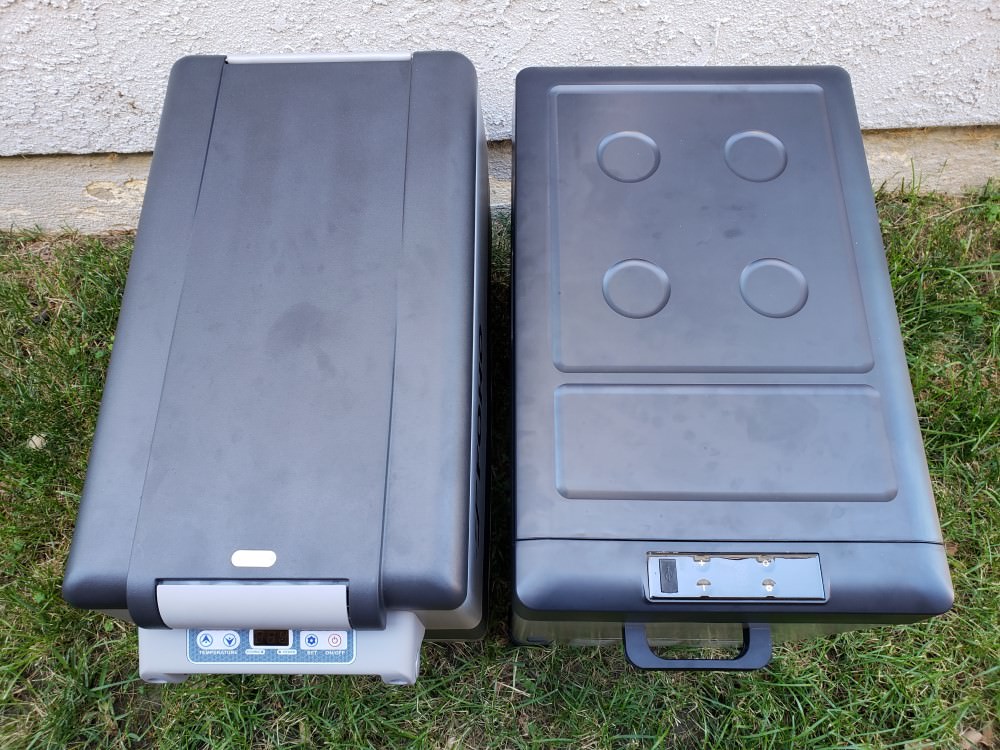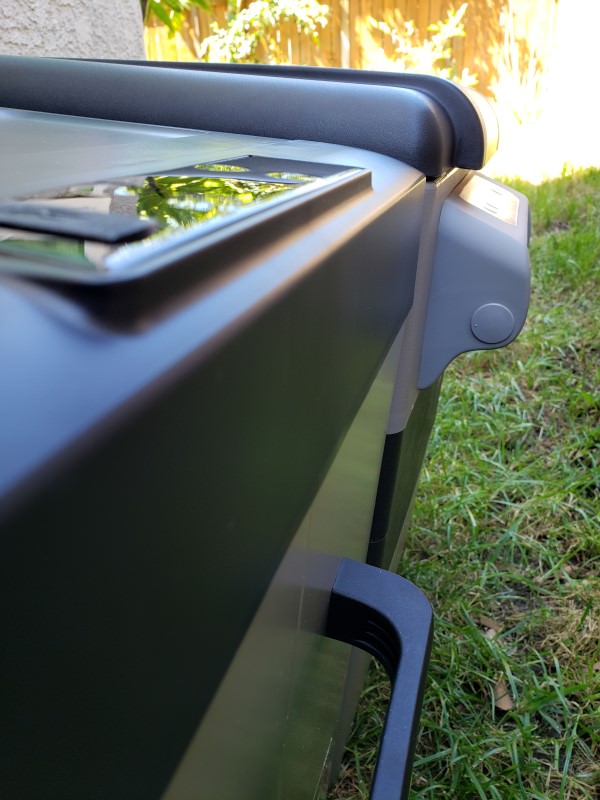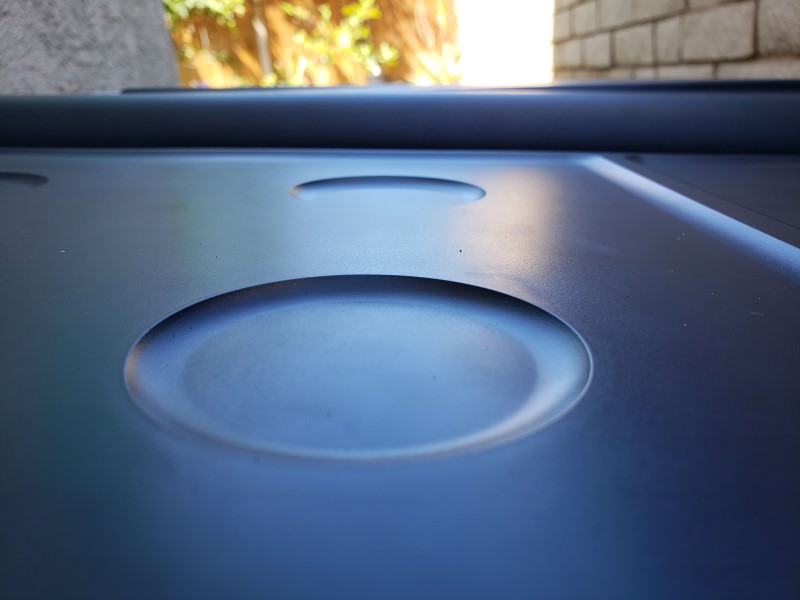Foho Car Freezer/Fridge 55qt (BCD52)
Contents
Camping Comforts
I am an avid hiker, camper, and wilderness backpacker and regularly organize camping events for as many as 45 participants. My family also grew to 4 (with a potential for a 5th coming in the near future), and with the larger size, I have increasingly found myself bringing more comforts to our outdoor adventures, including a 1000Wh battery power station for electronics (like a fan or portable ice maker.) The latest item to join our gear collection is a car freezer/refrigerator. Anything to make a trip more fun for the family (like surprising the children with ice cream in the middle of nowhere!)
A friend of mine previously said that he and four of his friends bought a Massimo brand from Costco, but all disliked it so much, most of them returned it and purchased a $1,000 one. The reason? Slow to cool and difficult to keep temperature. I am not as hardcore as they are to spend that much on something I would only use perhaps 3-6 times a year. So, I looked around and also asked an outdoorsy coworker who recommended his Foho 34 Quart [UPDATE 8/3/2020: Ironically, my family ended up purchasing one too!] Many sites mentioned Dometic, Massimo, Alpicool, Costway, and Foho. I ultimately narrowed it down to Costway, but found that Foho sold the EXACT same item, but rebadged. With my coworker liking his, I chose the Foho 55 Quart when there was a coupon available, bringing it to $350 ($20 less than the other).
The “Foho” brand is derived from “For Home”
This review is based on using the car freezer at home for 72 continuous hours after our power was shut off for a day for an electrical main panel upgrade. It was solely powered by the Jackery Explorer 1000 (and 2 Jackery SolarSaga 100W solar panels) while the Goal Zero Yeti 500x kept the internet running. I do not expect the Foho to behave any differently when used outdoor, except if the ambient temperature is significantly different.
What’s Good? What’s Bad?
Pros
- Very large capacity (can hold up to 40x 12oz water bottles or soda cans)
- Two sections: Freezer and Chiller
- Surprisingly fast freezing (Fast-Cool feature)
- After just 30 minutes, freezer section went from 78F to 28F, and the chiller was at 50F
- After 50 mins, freezer was 5F, and chiller 40F
- Note: Refrigerant R134a with mass charge of 40g (+/- 0.5g) is used
- Adjustable temperature: -4F to 50F (-20C to 10C)
- Allows use as either a fridge OR freezer (with a fridge section — Warning: COULD freeze items in there overnight if the temperature is set too cold)
- 2 Energy modes: Max and Eco
- Max is useful when surrounding temperature is 86F+ (30C) and Fast-Cool is needed. Runs compressor at a higher speed
- Eco mode, although using less energy, can ruin the compressor in the long run
- “ECO/MAX” LED: Max = Red. Eco = Green
- Temperature was roughly consistent during 3 days of continuous use. It was set at -2F, and spot checking throughout the day resulted in:
- Larger compartment: Between -4F and 3F (in Eco mode)
- Roughly -2F to 5F difference from set temperature is most likely the result of “E3” set to a default of 3C/5.4F (see PROGRAMMING section)
- Max mode caused smaller fluctuations
- Fast-Cool feature works in both modes
- Chiller section: Around 20F, eventually freezing anything left there
- Appears to have good insulation
- Understanding how a standard refrigerator works will educate you how this car freezer similarly operates. See the TIPS section for more details
- Larger compartment: Between -4F and 3F (in Eco mode)
- Two (2) Power options
- 12V or 24V car adapter (draws about 3-5A on 12V)
- 100-240V AC wall plug, outputting 14.5V at 6.0A (or about 87W)
- Cables for both included. Car cable is generously long at 11.5′
- Low energy usage. (See TIPS section for calculating how long the car freezer could be used for on a battery power station)
- Foho only uses power to reach or maintain set temperature (“Power” LED = Green). Once there, it goes idle (“Power” LED = Red)
- The colder the set temperature, the more energy will be used
- 50W with AC port of the Jackery Explorer 1000 (7W of that is used by Jackery’s inverter)
- Product description states 55W, but the Jackery reported up to 50W draw
- 38W with 12V DC car port on the Jackery
- 1W – 3W on idle (Green “Power” LED)
- Foho only uses power to reach or maintain set temperature (“Power” LED = Green). Once there, it goes idle (“Power” LED = Red)
- Three (3) levels of Battery Protection to prevent the car battery from running down
- Auto resume: When power supply is cut off and later restored, appliance continues operation
- Quiet operation (up to 40 dB, according to Foho)
- Built-in LED over chiller section to help see in the dark
- Usable during off-roading
- Works at up to 30 degree angle tilt
- Anti-shake design keeps compressor protected
- Removable wire basket to easily load/unload content from freezer section
- Removable divider for additional organization
- Sturdy carry handles on both ends
- Can secure Foho to car with straps, making it ideal for off-roading
- Lid opens from the front. Some may prefer a side opening
- Less vertical clearance is needed to fully open a side-mounted lid
- Can be used while the car is turned off, if its car port has a bypass to work directly off the battery
- Many SUVs, trucks, and minivans today have such output at the back. Refer to the car’s owner manual
- Overload protection with a replaceable 15A fuse
- Protective carry bag/cover is available but NOT included
- Insulated alternative that fits well: Smittybilt 2789-99 Transit Bag
Cons
- Like other car freezers in this Foho’s price range, requires manual defrosting
- To defrost and remove excess ice, power off the unit and wipe dry, then power back on
- Do not allow a large amount of frost to build up on the inside of the walls as that will make cooling less efficient
- I was not immediately able to find any portable car freezers that have an automatic, self-defrost cycle that “cleans” the freezer from accumulating too much frost
- To defrost and remove excess ice, power off the unit and wipe dry, then power back on
- No drain hole at the bottom to let excess or spilled liquid out
- You will have to use a towel to pick up leftover liquid, especially after defrosting
- At 36 lbs, could be heavy for some, especially if the inside is completely full
- No wheels to transport with
- No wheel kit available. Use a two-wheel cart to transport as needed
- Do NOT mess up your back as that will haunt you for the rest of your life!
- May be too large for some cars
- Where power cord is plugged in at the back, the plastic flexes a bit
- Makes me worry about whether it would crack over time with too much force. So, plug in carefully!
- Not waterproof. Keep it out of the rain
- No built-in cup holder on the lid
- Cannot be directly powered by Solar panels via MC4 or Anderson interfaces to make it a solar-powered freezer
- GoSun has a cooler with a built-in solar panel
Model Sizes
There are three, available models: BCD-52, BCD-42, BCD-32 (Quarts: 55, 44, 34. Liters: 52, 42, 32). The length and width are the same with only the height being different. Roughly, each smaller model is 3″ shorter, the equivalent of each of the dark gray bars in the middle (below the “Foho” logo).
Tips
- When you receive your car freezer, do NOT plug it in until it has stood upright for at least 10 hours to allow the refrigerant to settle
- Internal temperature is displayed on the LCD at power-on and updates periodically
- Power off/on by holding the “ON/OFF” button for a few seconds
- There is no built-in battery
- Requires a power station, 12V/24V DC/car port, 120V/220V AC, or solar panel(s) capable of providing at least 60W of sustained power
- Compressor is made by Wancool ZH25G
- Insulated cover that fits: Smittybilt 2789-99 Transit Bag
- Smittybilt 2789 Arctic looks similar to this Foho car freezer
Battery Voltage Protection
There are 3 levels of protection: High, Medium (Default), and Low. It is configured through a physical switch at the back of the unit.
- The car freezer will operate until the battery reaches a specific voltage level. Not setting the appropriate level could potentially leave you stranded with a car that will not start
- Compressor stops when 12V battery reaches 10.2V (Low), 10.7V (Medium), 11.7V (High)
- Resumes at 11.2V (Low), 11.7V (Medium), 12.7V (High)
- When connected to a battery power station: Use Medium or Low
- When connected to a car: Use High or Medium
Settings
“Set” button cycles through Fahrenheit/Celsius display and Max/Eco modes
- Eco uses less power (runs compressor at lower speed) than Max to minimize draw on any connected battery, but can ruin the compressor in the long run
- “ECO/MAX” LED on control unit: Max = Red. Eco = Green
Programming
To enter programming mode: Hold the “Set” button for 6 seconds. Cycle through the options by pushing “Set”, and change values up or down with the respective “Up” or “Down” buttons. To accept the setting, leave the screen blinking until it stops (approximately 6 seconds).
Here are the various options that can be programmed. They should not be modified as they could cause your freezer to fail or be damaged.
PROGRAM AT YOUR OWN RISK!
- E1: Lowest temperature that freezer can be set to cool down to. -40C/-40F to Target temp. Default: -20C (-4F)
- Caution: setting the value too low may damage the compressor
- E2: Highest temperature that freezer is allowed to reach. Target temp to 40C/104F. Default: 10C (50F)
- E3*: Difference from target temperature before powering up compressor again. 1C/1.8F to 10C/18F. Default: 3C (5.4F)
- Compressor should stop at target temperature (ie. 4C), and start again when internal temperature is E3’s value above it (ie. 4C + 3C = 7C)
- E4: Time delay protection. 0-10 mins. Default: 3 min
- To protect the compressor, it will wait that amount of time after being idle/powered off before turning on again
- F1*: Do not modify. Temperature compensation (for temp set to above -6C/21.2F). -10C/-18F to 10C/18F. Default: 2C (3.6F)
- Displayed temperature = Detected temperature + Temperature compensation
- Used to match Displayed temperature to what is actually Detected inside the unit
- Displayed temperature = Detected temperature + Temperature compensation
- F2*: Do not modify. Temperature compensation (for temp set to between -12C/10.4F and -6C/21.2F). -10C/-18F to 10C/18F. Default: 3C (5.4F)
- F3*: Do not modify. Temperature compensation (for temp set to below -12C/10.4F). -10C/-18F to 10C/18F. Default: 4C (7.2F)
* Each difference of 1C is 1.8F
Temperature Compensation
If you find the temperature displayed on the control panel is different than what is actually inside, the discrepancy can result in content overcooling or being too warm. For instance, if you meant to keep fruit cool at a set 40F, but the true temp inside is 32F, you will unintentionally have FROZEN fruit. Or, if you wanted to keep meats frozen at 29F, but the true temp inside is 36F, you may find the content having melted.
The displayed temperature should be roughly the same (by about 5.4F by default) as the actual one inside because the compressor will ONLY stop cooling when the display (not the storage’s true temp) matches the set degrees.
If you find the temperature displayed on the control panel is different than what is actually inside, the discrepancy can result in content overcooling or being too warm.
To correct the discrepancy between the set/displayed temperature and what the internal storage really is, place two, reliable thermometers inside and perform tests with temps set to 0C, -9C, and -20C (one for each of the F1 – F3 ranges). I found the calibration easier to start with the warmer values first. If, for example, the display is 8C, 4C, and 1C higher (for each range) than what is inside, set the temperature compensations to: F1 = -8C, F2 = -4C, and F3 = -1C.
Runtime with Battery Power Stations
- To calculate how long the car freezer could be used for with a battery power station depends on the battery’s capacity (Wh) and how much power (W) the Foho draws
- Examples are with a Jackery Explorer 1000 (1002 Wh). Halve the time when used with a Goal Zero Yeti 500x (500Wh)
- Plugged into AC port: 1002 Wh x 0.85 / Device Wattage
- As short as 17 hours (1002 Wh x 0.85 / 50W)
- Informal testing found an estimated use of 500-600 Wh/day as a fridge. It was idle much of the time
- About 10-15% of power is lost during conversion from DC (battery) to AC, which is normal for all power stations
- As short as 17 hours (1002 Wh x 0.85 / 50W)
- Plugged into DC port: 1002 Wh / Device Wattage
- As short as 26 hours (1002 Wh / 38W)
- In reality, because the unit stays IDLE most of the time, it should last a LOT longer than the hours listed above
- Plugged into AC port: 1002 Wh x 0.85 / Device Wattage
Foho only uses power to reach or maintain the set temperature. Once there, it goes idle to minimize power draw. As such, the Foho could last a lot longer than the times listed above
Cooling Efficiency
- Foho only uses power to reach or maintain the set temperature (“Power” LED = Green). Once there, it goes idle (“Power” LED = Red)
- Time can be shorter or much longer, depending on how often the Foho’s compressor needs to be activated to reach or maintain target temperature
- The colder the set temperature and/or the warmer the ambient (surrounding) heat, the more energy will be used
- Keep in a cool location and out of direct sunlight for best efficiency
- Consider putting the Foho in an insulated bag for better cooling, like the Smittybilt 2789-99 Transit Bag
- Ensure adequate air flow (4″+) on all sides of the Foho, especially the back
- The more frozen/cold items are inside, the longer they can stay cool/frozen. Avoid opening the lid too often or for too long
Maintenance
- Ensure lid seal is clean and unobstructed to keep cold air from escaping
- Clean inside with a damp cloth every week
- Use sodium bicarbonate (baking soda) dissolved in lukewarm water to clean anything dirty
- Allow inside to dry before closing lid and putting away
- Do not use detergent, soap, or abrasive/sharp products
- Never clean under running water
- Do NOT store the unit on its side. Always keep it upright to prevent damage to the compressor
Error Codes
When the control module fails, the LED will display an error code. The following has been adapted from the manuals of both Foho and similar-looking Smittybilt 2789:
- ER0: Temperature sensor short-circuit
- Compressor will still work for 30 mins, then stop for 30 mins
- Solution: Change temperature sensor line
- ER1: Battery under-voltage protection
- Solutions: 1) Change/charge battery. 2) Lower the physical battery protection switch to a lower setting
- ER2: DC fan overload protection
- Solution: Clean or change fan
- ER3: Compressor failed to start
- Rotor is blocked or the differential pressure in refrigeration system is too high
- Solution: Power off for at least 30 mins and turn on again
- ER4: Compressor speed is abnormal
- Solutions: 1) Reduce load on refrigeration system. 2) Increase temperature setting. 3) Change the main controller
- ER5: Temperature of control module is abnormal
- Solutions: 1) Move unit to a well-ventilated place, allow compressor to cool, and turn on again. 2) Ensure all vents and internals are cleaned with compressed air
- ER9: Temperature sensor open-circuit (disconnected)
- Compressor will still work for 30 mins, then stop for 30 mins
- Solutions: 1) Tighten temperature sensor line. 2) Change temperature sensor line
- NTC: Temperature sensor failure
- ER0 or ER9 will follow. Once resolved, the internal temperature will display again
With ER1 through ER5, the compressor will stop working until the issue has been resolved. When turning on the car freezer, keep in mind that there is a (default) 3 min startup delay.
Defrosting and How Refrigerators Work
I was fortunate (or unfortunate) to troubleshoot our home refrigerator a few years ago when it could not keep food frozen nor items cool in the fridge section, resulting in nearly a thousand dollars in lost food and medication… twice. Sears technicians were useless and considered the unit a total loss. After having spent months researching and learning, I gained an understanding of how refrigerators work and fixed it myself. (If you are curious, 2 thermistors needed to be replaced at a couponed cost of $86.)
- A refrigerator unit consists of two compartments: freezer and refrigerator (for drinks, fruit, veggies, etc.)
- Freezer pushes cold air into the fridge section via a fan, and the warmer air from the fridge is returned to the freezer for cooling
- If the freezer fails, so will the fridge
- The compartments each have a thermistor (a resistance thermometer) to sense how cold both sections are
- Compressor (and associated fan) is turned on or off as needed to maintain the temperatures
- Over a long time, as you keep opening the door and let warmer air enter the freezer, the air moisture turns into frost/ice along the walls and shelves
- Cooling efficiency diminishes and could spoil food faster when safe temperatures cannot be maintained
- Frost build-up reduces available freezer space
- For optimal efficiency, you should defrost the freezer at least once a year by unplugging the appliance and letting the ice melt off the sides and shelves
- Have a towel ready to soak up the melted water and wipe dry the sides before turning it back on
- Today’s refrigerators have an auto-defrost cycle where heat is applied to the freezer’s evaporator coil (which is responsible for cooling)
- Melted water leaves the freezer and is evaporated by a fan
- Cycle can occur once or multiple times a day, resulting in fluctuating temperatures
- Auto-defrosting freezers cost more, use more energy, make more noise, but requires less maintenance
The Foho car freezer does NOT have an auto-defrost cycle (nor was I immediately able to find any portable ones that do), and so requires occasional, manual defrosting when used for an extended period of time. Because it does not have two thermistors and separately enclosed freezer and chiller sections, they cannot have their temperatures individually controlled. As such, items in the chiller could freeze over time as the cold air travels over from the freezer section.
I set the temperature to -4F for a test and left a water bottle in each compartment. Within a few hours, the freezer bottle froze (5F) and the other was merely cold (20F). The chiller bottle became frozen overnight, however, since 20F is below freezing.
Domende HC-50 vs Foho BCD-52
Update 7/20/2020: After this review was published, I got a chance to evaluate the Domende HC-50, a single-compartment car freezer of the same volume. For those wondering which one is better, both car freezers are excellent in their own rights. The Domende (aka “Donmende”) accommodates a wider range of content sizes, adds a Bluetooth-enabled app control, but only offers one temperature setting for the entire, single compartment. Foho, on the other hand, has a much more solid design, tougher exterior, and contains two sections where one can operate as a freezer and the other as a chiller.
Final Thoughts
For years, I had known that portable car refrigerators existed but thought they were merely powered gadget coolers not worth investing in. “Simply put drinks and food in an iced, insulated cooler”, I thought, but that required constant access to ice (or frozen gels) that could turn into a melted mess. Food had to be packed or stored in such a way to prevent water from entering, or you would have to drain liquid and refill ice. As I had invested in portable, battery power stations (current favorites are the Goal Zero Yeti 500x and Jackery Explorer 1000) and solar panels, I became more curious about what they could power. How about a fridge/freezer combination with adjustable temperatures so our family could bring milk for the baby and ice cream for the kids (and adults!) What if we go on a road trip or go camping for an extended period of time where the sole source of power would be from the car battery or power station/solar panel combo? That’s when my research led me to purchase the Foho 55 quart car freezer.
The Foho BCD-52 (55 Qt) came at the right time when the power was turned off for our home for the majority of the day during a solar panel roof installation project. It literally kept a chunk of food frozen for the 3-day test duration, powered entirely by a battery station and dual solar panels, giving me confidence that we could bring the comfort of cold (or frozen) items on our trips. I very much enjoyed how quiet and energy-efficient it was, although I wish it had a set of wheels to help carry the heavy appliance around, and a drain hole for defrosting or spilled liquid cleanup. Depending on the number of passengers and available cargo space, the BCD-52 model may be too large for some cars and more suitable for trucks and RVs. You may consider the 44 Qt (BCD-42) or 34 Qt (Review: BCD-32) model instead.
Overall, I am quite happy with this car refrigerator/freezer that was able to reach freezing temperatures in less than an hour. Should there be any power failures, I would happily be able to tell my wife that we have a reliable refrigerator available for any necessary medication or baby milk with the capability to run for days, weeks, perhaps even months.
Where To Buy
- Foho Car Freezers
- BCD-52 (55 Qt)
- Insulated cover that fits: Smittybilt 2789-99 Transit Bag
- BCD-42 (44 Qt) / BCD-32 (34 Qt) – See our Review
- BCD-52 (55 Qt)
- Smittybilt 2789 Arctic Car Freezer
Related Reviews
- Car Freezers
- Costway EP24413/24413-CYPE (53qt) Dual-temperature
- Foho BCD-32 (34qt)
- Domende HC-50 (54qt)
- Rockpals RP-25L (26qt)
- Car Freezers with Battery
- Acopower LiONCooler X40A (42qt) with Solar charging
- Bodega Cooler Mini P15 (16qt) with 2 Battery Slots

